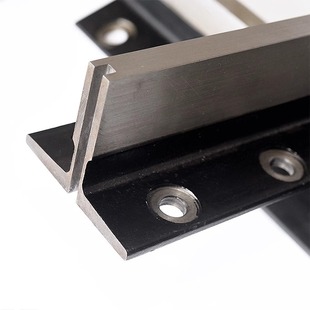
Guide rails play a crucial role in the safe operation of many systems, including elevators, escalators, and conveyors. To ensure that these systems perform as expected, guide rails must meet specific standards that guarantee their reliability and safety.
The most commonly referenced standards include those set by organizations such as the International Organization for Standardization (ISO), American National Standards Institute (ANSI), and European Committee for Standardization (CEN). These standards cover various aspects of guide rail performance, from material quality to dimensional accuracy, ensuring they can withstand operational stresses while maintaining their integrity over time.
For instance, ISO 7438 defines the mechanical properties of metallic materials used in guide rails, while ANSI A17.1 covers the design and installation of elevator guide rails, focusing on safety and reliability. Understanding these standards is crucial for choosing the right guide rail for specific applications, ensuring optimal performance and safety.
Certifications are essential because they serve as a guarantee that a product meets the required standards. When choosing guide rails, it is crucial to verify that they are certified by reputable organizations. Certification indicates that the manufacturer has adhered to strict quality control processes, ensuring the product's safety, reliability, and compliance with industry regulations.
Guide rail certifications often encompass tests for material strength, durability, load-bearing capacity, and resistance to wear and corrosion. A certified guide rail can provide confidence that it will perform as expected under normal operating conditions, reducing the risk of system failure or safety incidents.
For example, an ISO 9001 certification guarantees that the guide rail manufacturer follows an internationally recognized quality management system. Choosing certified guide rails helps businesses avoid costly repairs, downtime, and potential safety hazards.
Certification means that a guide rail has passed stringent tests conducted by accredited testing bodies. These tests ensure the product meets specific industry standards and performs optimally in real-world conditions.
For example, CE certification in Europe confirms that the product complies with safety, health, and environmental protection standards within the European Union. In the United States, guide rails that are ANSI certified have undergone testing to meet safety and quality standards set by the American National Standards Institute.
Being certified means the guide rail meets all required parameters, including material strength, tensile strength, and flexural performance. These tests ensure the rail can handle the demands of its application, whether in an elevator or an industrial conveyor system.
When assessing guide rails, it’s essential to understand what testing and compliance procedures they have undergone. Testing ensures that guide rails will function as expected in their intended environment and under the weight and stress they will face.
Certification marks on the guide rail or packaging can indicate that the product has passed these tests, providing peace of mind regarding its performance.
To ensure that a guide rail’s certification is legitimate, buyers should check for the following:
Verifying these factors helps ensure that you’re purchasing a guide rail that meets industry standards and offers the safety, durability, and performance you need.
Guide rail standards and certifications are critical for ensuring the reliability and safety of these essential components. By understanding the standards, recognizing the importance of certifications, and knowing how to verify their legitimacy, buyers can make informed decisions that contribute to the longevity and performance of their systems. Always choose certified guide rails to guarantee quality and peace of mind.